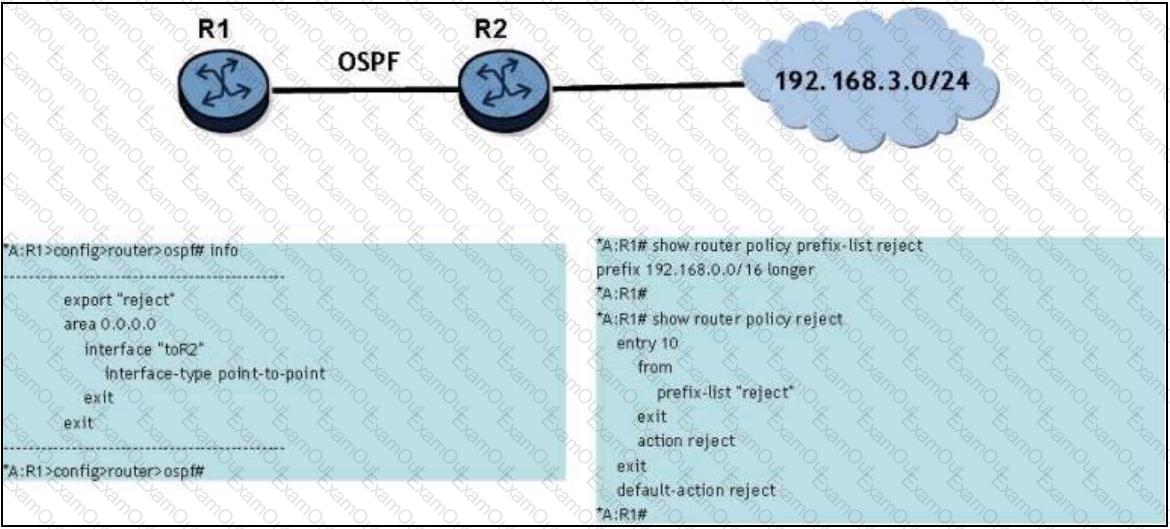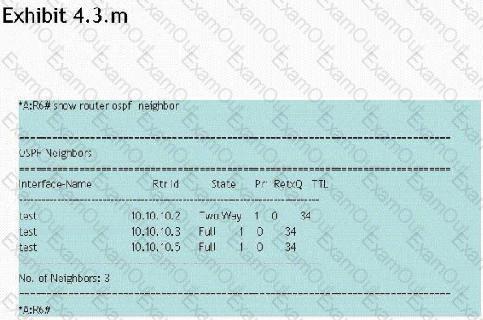Click the exhibit button.

Router R2 advertises the network 192.168.3.0/24 to router R1 via OSPF. A route policy has been constructed to discard the route on router R1; however, it is not working. What is the problem?
From the list below select the statements that describe the behavior of link state information aging. (Choose 2)
An OSPF router receives an update in which the sequence number, age, and checksum are the same as the entry already in the topological database. What action is taken by the router?
What causes an adjacency to change from down to two ways?
Click the exhibit button.

What can you deduce from the show command on router R6?
In an OSPF Hello packet, which of the following fields must match for all neighbor routers on the segment? Choose three answers.
An interface is configured on a router for OSPF but the command "show router ospf neighbor" does not show any neighbors. Which of the following is NOT a possible cause?
In an OSPF Hello packet what fields must match all neighbor routers on the segment? (Choose 3)
Which of the following are similarities between OSPF and IS-IS? Choose two answers.
Which of the following statements regarding OSPF routing updates on a point-to-point link is true?

